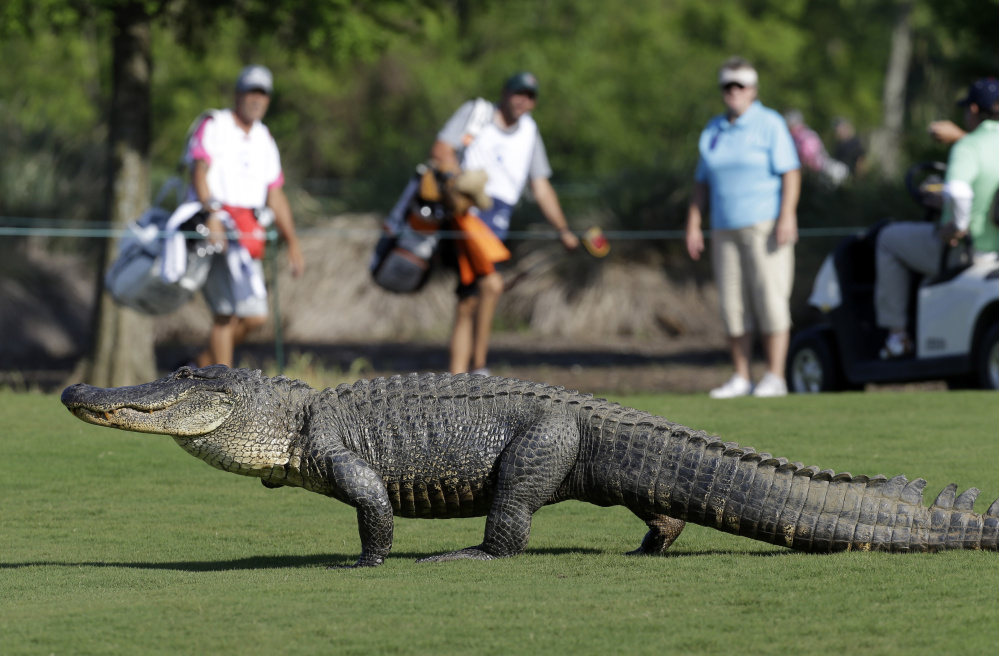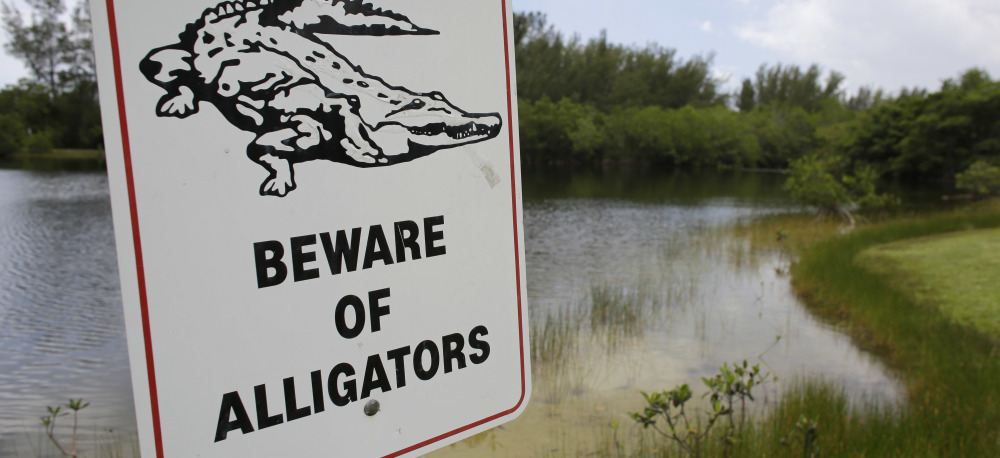The American alligator once neared extinction. By the 1950s, demand for hides and uncontrolled hunting in the Southeastern United States had almost wiped out the species after a 200 million-year run on planet Earth.
Three decades later, alligator populations were fully recovered, “making it one of the first endangered species success stories,” according to the U.S. Fish and Wildlife Service.
The re-emergence of the alligator came at the same time the human population also grew, both in size and sprawl, creating a dynamic with an unavoidable outcome: human and predator interaction.
Alligator run-ins can be dangerous and sometimes have tragic outcomes. Incidents such as the one involving a 2-year-old boy killed this week by an alligator in Florida Disney Resort’s man-made lake garner widespread attention and stir alarm over animal-human conflict.
But alligator attacks on humans are still incredibly rare, and official statistics don’t show there’s any spike. Since 1948 through 2015, there have been 383 attacks in Florida, 23 of which were fatal, according to the Florida Fish and Wildlife Commission.
Wildlife experts caution that the best approach in the face of such a tragedy is to educate the public on the dangers lurking in Florida’s waters and how to avoid coming into contact with alligators.
But why are we running into them in the first place? Human-alligator conflict is “an inevitable consequence of a successful conservation story of a large predator,” said Frank Mazzotti, a professor at University of Florida’s Institute of Food and Agricultural Sciences, also known as UF-IFAS.
That’s true not just for alligators but also for bears, big cats, “anywhere there has been a successful recovery program,” Mazzotti said. “Because during the same time, the human population has also increased and is now living more frequently where that large predator was living.”
There is some debate as to how close the alligator came to extinction, given how quickly the population has ballooned in just two decades. Population estimates were based on hides, but it’s generally accepted that widespread, unregulated hunting and the demand for hides greatly depleted alligator populations in the Southeast during the first half of the 20th century. In 1967, the species received federal protection as an endangered species that couldn’t be legally hunted. By 1987, the government removed the animal from the endangered species list.
We also now have more people around. Florida is home to more than 20 million people and 1.3 million alligators. Humans have built houses, golf courses and resorts in places that are on the edge of or were once themselves natural alligator habitats, lands where the “water used to sit,” Mazzotti said. These areas now have storm water ponds to collect all that water – ponds that are perfect for hosting alligators.
“That’s what creates the interface between humans and alligators, the storm water ponds,” Mazzotti said.
Send questions/comments to the editors.




Success. Please wait for the page to reload. If the page does not reload within 5 seconds, please refresh the page.
Enter your email and password to access comments.
Hi, to comment on stories you must . This profile is in addition to your subscription and website login.
Already have a commenting profile? .
Invalid username/password.
Please check your email to confirm and complete your registration.
Only subscribers are eligible to post comments. Please subscribe or login first for digital access. Here’s why.
Use the form below to reset your password. When you've submitted your account email, we will send an email with a reset code.